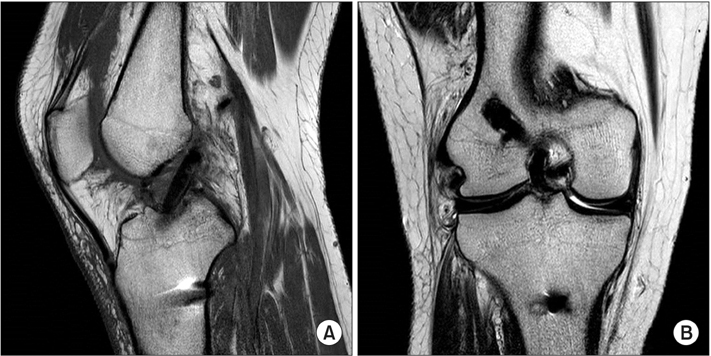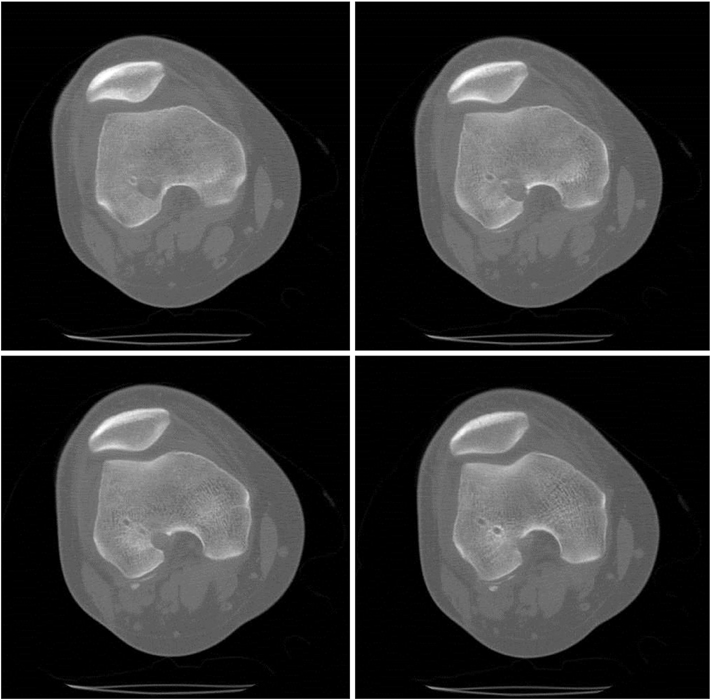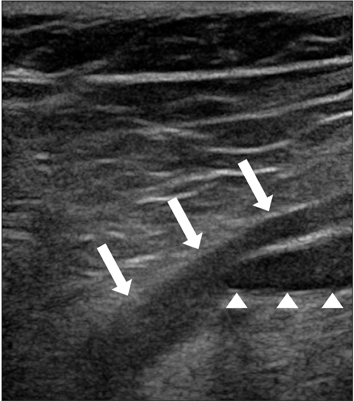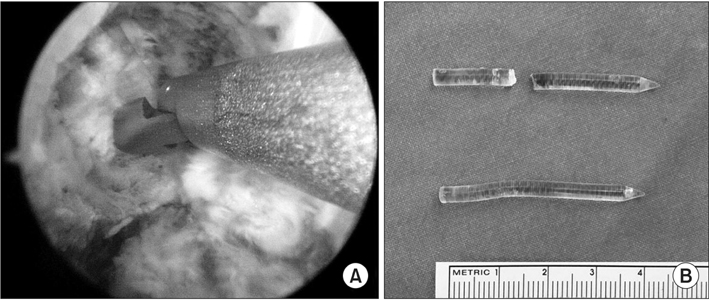J Korean Orthop Assoc.
2016 Aug;51(4):350-355. 10.4055/jkoa.2016.51.4.350.
Breakage of the Femoral Cross-Pin with Impending Rupture of the Popliteal Vessels after Anterior Cruciate Ligament Reconstruction
- Affiliations
-
- 1Department of Orthopaedic Surgery, Dong-A University College of Medicine, Busan, Korea. libi33@dau.ac.kr
- 2Department of Orthopaedic Surgery, Dong-Eui Medical Center, Busan, Korea.
- KMID: 2348643
- DOI: http://doi.org/10.4055/jkoa.2016.51.4.350
Abstract
- Breakage of the femoral cross-pin with impending rupture of the popliteal vessels is a rare complication for femoral tunneling in anterior cruciate ligament (ACL) reconstruction. The authors experienced a case of impending rupture of the popliteal vessels following breakage of the cross-pin 16 days after primary ACL reconstruction. Impending rupture of the popliteal vessels was detected with ultrasonography following breakage of the cross-pins which caused popliteal discomfort and irritation. After removal of the broken cross-pins, previous ACL graft and interference screw with subsequent re-reconstruction of the ACL using a new allograft and interference screw, the patient showed satisfactory results and resolution of symptoms. Therefore we report on this case with a review of literature.
MeSH Terms
Figure
Reference
-
1. Ahmad CS, Gardner TR, Groh M, Arnouk J, Levine WN. Mechanical properties of soft tissue femoral fixation devices for anterior cruciate ligament reconstruction. Am J Sports Med. 2004; 32:635–640.
Article2. Ahn JH, Park JS, Cho YJ, Joung YS. Arthroscopic ACL reconstruction with autologous hamstring tendon using bioabsorbable cross pin fixation on the femoral side. J Korean Orthop Assoc. 2005; 40:659–666.
Article3. Seo SS, Kim CW, Kim JS, Choi SY. ACL reconstruction with autologous hamstring tendon: short term clinical result using new femoral suspensory fixation device 'cross pin' and graft tensioner for maintaining a constant tension. J Korean Orthop Soc Sports Med. 2011; 10:27–34.4. Kokkinakis M, Ashmore A, El-Guindi M. Intraoperative complications using the Bio-Transfix femoral fixation implant in anterior cruciate ligament reconstruction. Arch Orthop Trauma Surg. 2010; 130:375–379.
Article5. Milano G, Mulas PD, Ziranu F, Piras S, Manunta A, Fabbriciani C. Comparison between different femoral fixation devices for ACL reconstruction with doubled hamstring tendon graft: a biomechanical analysis. Arthroscopy. 2006; 22:660–668.
Article6. Han I, Kim YH, Yoo JH, Seong SC, Kim TK. Broken bioabsorbable femoral cross-pin after anterior cruciate ligament reconstruction with hamstring tendon graft: a case report. Am J Sports Med. 2005; 33:1742–1745.7. Hasan S, Nayyar S, Onyekwelu I, Kalra K, Gyftopoulos S, Jazrawi LM. Complications using bioabsorbable cross-pin femoral fixation: a case report and review of the literature. Case Rep Radiol. 2011; 2011:349230.
Article8. Choi NH, Lee JH, Victoroff BN. Do broken cross-pins compromise stability after anterior cruciate ligament reconstructions with hamstring tendons? Arthroscopy. 2007; 23:1334–1340.e2.
Article9. Cossey AJ, Paterson RS. Loose intra-articular body following anterior cruciate ligament reconstruction. Arthroscopy. 2005; 21:348–350.
Article
- Full Text Links
- Actions
-
Cited
- CITED
-
- Close
- Share
- Similar articles
-
- One-Year Serial Follow-up Magnetic Resonance Imaging Study of RigidFix for Femoral Fixation in Anterior Cruciate Ligament Reconstruction
- Popliteal Artery Pseudoaneurysm after Anterior Cruciate Ligament Re-Revision Using a Rigidfix Cross Pin
- Popliteal Artery Pseudoaneurysm after Arthroscopic Posterior Cruciate Ligament Reconstruction: A Case Report
- Open anterior cruciate ligament reconstruction using inside-out femoral drilling
- Popliteal Pseudoaneurysm after Arthroscopic Posterior Cruciate Ligament Reconstruction





